| jim.hutchins.name > Jim Hutchins' Resumé > Communication and Public Outreach Skills | |||||
Resumé James B. Hutchins |
|||||
Department of Health Sciences Weber State University Ogden UT 84408-3909 (801) 626-6505 |
|||||
 |
|||||
| Communication and Public Outreach Skills | |||||
I strongly feel that the University is part of a larger community, and that as academics we must promote and strengthen those bonds. Toward that end, I spearheaded two activities at the University of Mississippi Medical Center: “Mini-Med School”, a four-week program with speakers on medical topics; and “The Santa Institute”, a purely fun activity with a Christmas theme. For 10 years, I served as moderator of the University of Mississippi Medical Center's Mini-Medical School, based on a concept developed at the University of Colorado. The public is invited to a series of free lectures on medical topics, each of which is followed by a question-and-answer session. The response has been quite strong, with full attendance in a 300-seat auditorium for each session. Part of my responsibility has been working with the University of Mississippi Medical Center's Public Relations office to promote these sessions, and in this capacity I've appeared on local television news and interview programs several times. I've also received several teaching awards. |
|||||
I also “founded” The Santa Institute, where four medical center doctors (two researchers, a veterinarian, and a physician) would answer children’s questions about Santa Claus. This effort received national recognition in the popular press. (Okay, so Korky Vann has me down as "John Hutchins", but at least she spelled my surname right. Besides, I don't mind giving my father credit for my work.) |
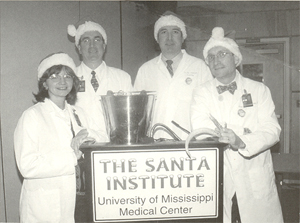 |
||||
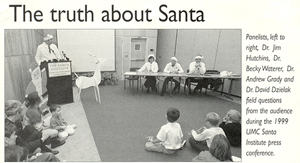 |
I've written two Op-Ed pieces for the Ogden (Utah) Standard-Examiner: one on pending legislation for e-textbooks, and one on the role of the university in community-based research. With my dog Annie, I’ve been a popular volunteer in pre-kindergarten classes and at Children’s Hospital. I have participated in the building of four Habitat for Humanity homes, including one "blitz build" in which our team constructed a house from the ground up in seven days (on the second day, Sunday, we rested). |
||||
Do-It-Yourself Agility Equipment ' I wrote a book, Do-It-Yourself Agility Equipment: Constructing Agility Equipment for Training or Competition, showing how to make your own dog agility equipment, suitable for use by experts and novices alike. I've sold thousands of copies, first as a self-published book, and now with the help of the cool people at CleanRun Magazine. It was published first as a serial in the monthly magazine, and now it's a book. I maintain the "Australian Cattle Dogs in Agility" webpage, and own the corresponding domain name (www.acdagility.com), although I don't give it as much time as I should. It became too hard to extract event results out of the different agility organizations, which meant keeping standings was a nightmare. The photo page is still fun to look at, though. |
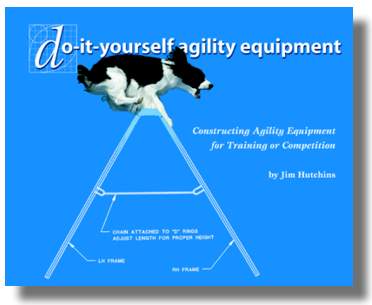 |
||||
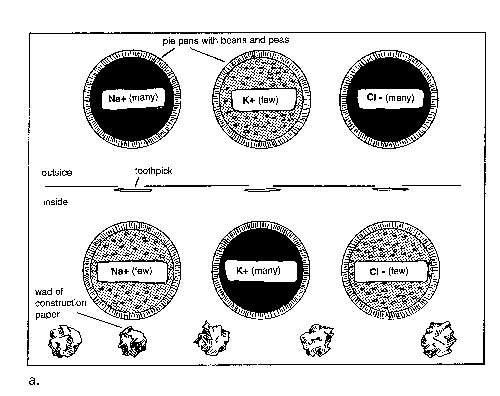 |
High School Textbook; Teacher and Student Resources I am capable of, and enjoy, communicating science at all levels. I've participated in writing textbook chapters, student resource materials, and teacher resource materials. Hutchins J.B. (co-editor). Neuroscience Laboratory and Classroom Activities, Reston, VA: National Association of Biology Teachers, ISBN 0-941212-20-3, 1996. Hutchins J.B. Unit 6.4: The nature of behavior. In: Biology: A Community Context Student Resource, Speziale B.J., Leonard W.H. and Penick J.E., eds. Cincinnati: South-Western Educational Publishing, ISBN 0-538-68573-5, 1999. Mason C.A., Hays L., Hutchins J.B., Kick B. and Wagner S. Unit VI: Behavior. In: Biology: A Community Context, Cincinnati: South-Western Educational Publishing, ISBN 0-538-65208-X, 1997. |
||||
| In this student activity from Neuroscience Laboratory and Classroom Activities, beans are used to model the action potential in nerve cells. | |||||
| I'm not averse to posing as a sheep to demonstrate the finer points of comparative vertebrate neuroanatomy to high school students. This picture is from a visit to Ben Lomond High School in Ogden, Utah. | 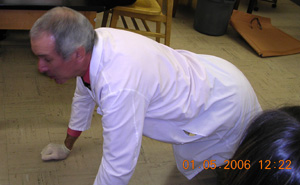 |
||||
A particular interest has been in the use of computer technology to enhance information retrieval and exploration. One set of examples are reviews of computer resources on the then-new World Wide Web. Before Google, there was very little information on the internet and what was available was not organized in any meaningful way. I compiled useful links into a regular column for the now-defunct publication Science and Engineering Network News (SENN). I held a position on the editorial board of this monthly periodical. I served as anatomical consultant on a product, The Spine ( A.D.A.M. Medical-Legal Illustrations, 1995), designed to help attorneys explain difficult concepts associated with spinal cord injury and surgery to clients, juries, and other legal professionals. I have been invited to peer review over a dozen manuscripts. I have also served as an invited reviewer on monographs and grant applications. I have served as research mentor for dozens of students, at all levels, from M.D. fellows in the final years of their training to high school students just embarking on the first steps in a research career. |
|||||
Reference List
Book for the General Public
|
|||||
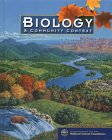 |
High School Textbook; Teacher and Student Resources Hutchins J.B. (co-editor). Neuroscience Laboratory and Classroom Activities, Reston, VA: National Association of Biology Teachers, ISBN 0-941212-20-3, 1996. Hutchins J.B. Unit 6.4: The nature of behavior. In: Biology: A Community Context Student Resource, Speziale B.J., Leonard W.H. and Penick J.E., eds. Cincinnati: South-Western Educational Publishing, ISBN 0-538-68573-5, 1999. Mason C.A., Hays L., Hutchins J.B., Kick B. and Wagner S. Unit VI: Behavior. In: Biology: A Community Context, Cincinnati: South-Western Educational Publishing, ISBN 0-538-65208-X, 1997. |
||||
Medical School Textbook Chapters Hutchins J.B., Ard M.D. and Naftel J.P. Cell biology of neurons and glia (chapter 2). In: Fundamental Neuroscience (Haines D.E., editor), New York: Churchill Livingstone, ISBN 0-443-08874-8, 1997. (Also revised for 2nd edition, ISBN 0-443-06603-5, 2002). Evans O.B. and Hutchins J.B. Development of the nervous system (chapter 5). In: Fundamental Neuroscience (Haines D.E., editor), New York: Churchill Livingstone, 1997. (Also revised for 2nd edition, ISBN 0-443-06603-5, 2002). Hutchins J.B. and Corbett J.J. Visual system (chapter 19). In: Fundamental Neuroscience (Haines D.E., editor), New York: Churchill Livingstone, 1997. (Also revised as Chapter 20 for 2nd edition, ISBN 0-443-06603-5, 2002). |
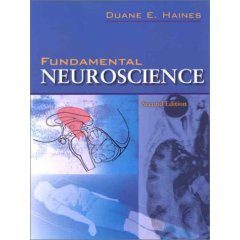 |
||||
On Teaching Medical Students Haines D.E., Hutchins J.B. and Lynch J.C. Medical neurobiology: do we teach neurobiology in a format that is relevant to the clinical setting? Anat Rec 269:99-106, 2002. Publications on Clinical Science Topics Tibbs R.E. Jr., Bowles A.P., Raila F.A., Fratkin J.D. and Hutchins J.B. Should endolymphatic sac tumors be considered part of the Von Hippel-Lindau complex? Neurosurgery 40:848-855, 1997. [This work has been cited over 32 times by other authors.] Yasuda S.U., Sausville E.A., Hutchins J.B., Kennedy T. and Woosley R.L. Amiodarone-induced lymphocyte toxicity and mitochondrial function. J Cardiovasc Pharmacol 28:94-100, 1996. |
|||||